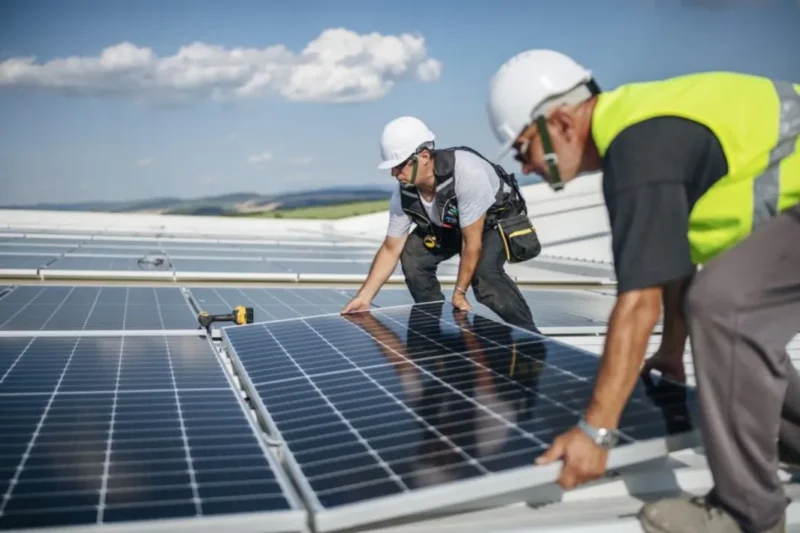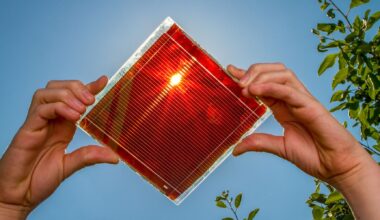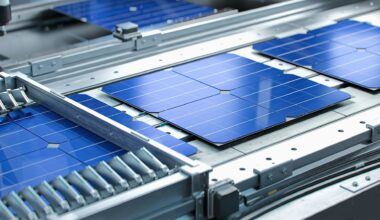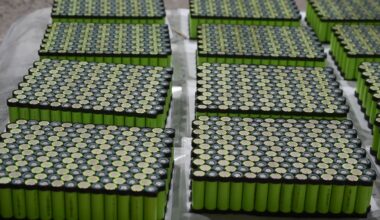Credence Solar Unleashes the 600W TOPCon Solar Panel—The High-Efficiency Powerhouse Every Installer Wants in 2025
Why the 600W TOPCon Solar Panel Is Stealing the Spotlight
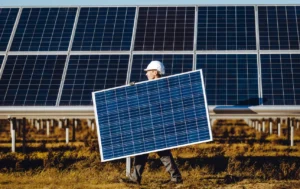
If you have spent any time in the solar trenches over the last decade, you already know how rare it is for a single product launch to shift the cost-performance curve overnight. Yet that is exactly what Credence Solar’s new 600W TOPCon Solar Panel—officially branded the Hyper Nova N—has done. As an engineer who has logged thousands of rooftop hours (and more than a few sun-burned site visits across West Africa and India), I can say without hesitation that this is the most installer-friendly, ROI-turbo-charged module I have seen since PERC first hit mainstream production. With front-side efficiencies touching 23.25 % and bifacial gains that push effective output to 660 W, the 600W TOPCon Solar Panel is poised to become the reference module for utility, C&I, and even high-end residential arrays in 2025.
In this deep-dive, I will unpack the numbers behind the hype, compare the 600W TOPCon Solar Panel to today’s best PERC and HJT offerings, and share field-tested tips on squeezing every extra watt (and naira) from Credence’s new glass-to-glass powerhouse.
The Technology Edge: What Makes a 600W TOPCon Solar Panel Different?
TOPCon 101—Tunnel Oxide Passivated Contact in Plain English
Conventional PERC cells improved efficiency by passivating the rear surface; TOPCon (Tunnel Oxide Passivated Contact) takes that idea further. A super-thin oxide layer and doped polysilicon stack passivate both sides of the cell, slashing recombination losses and creating a built-in field that shepherds electrons toward the busbars instead of letting them fizzle out as heat. In real-world terms? Higher voltage, lower current mismatch, and a spectacular leap in bifaciality—all baked into every 600W TOPCon Solar Panel Credence ships.
Half-Cut, 16-Busbar, 144-Cell Construction
Credence sliced each 210 mm TOPCon wafer in half to reduce resistive losses and boosted current collection with a 16-busbar layout. The result is a beefy 51.5 V open-circuit voltage, 14.7 A short-circuit current, and a nameplate power class that starts at 580 W but tops out at the headline 600 W.
Bifaciality Up to 85 %
Thanks to the transparent glass-to-glass architecture and that tunnel-oxide magic, the rear side churns out up to 10 % extra power. Put two kilowatts of 600W TOPCon Solar Panel modules over a white TPO roof membrane, and you are harvesting the equivalent of 2.2 kW without adding a single extra racking rail.
Specification Breakdown: The Numbers Behind the Hype
| Spec | Hyper Nova N 600 W TOPCon Solar Panel |
|---|---|
| Rated Power (front) | 600 W |
| Bifacial Gain | Up to 10 % (≈ 60 W) |
| Max Output (with gain) | 660 W |
| Efficiency | 23.25 % (front) |
| Open-Circuit Voltage (Voc) | 51.25–51.5 V |
| Short-Circuit Current (Isc) | 14.35–14.70 A |
| Dimensions | 2278 × 1134 × 35 mm |
| Weight | 33.75 kg |
| Temperature Coefficient (Pmax) | –0.32 %/°C |
| Operating Temp | –40 °C to +85 °C |
| Bifaciality Factor | Up to 85 % |
| Ingress Rating | IP68, glass-to-glass |
If you are spec-drooling, you are not alone. Every line item screams system-level savings: fewer modules, fewer clamps, shorter string runs, and a gentler shade chart.
Real-World Performance: How the 600W TOPCon Solar Panel Handles Heat, Dust, and Humidity
Lower Temperature Losses
With a Pmax coefficient of –0.32 %/°C, the 600W TOPCon Solar Panel loses roughly 20 % less power at noon on a 45 °C Abuja rooftop than legacy poly modules. That translates to extra kilowatt-hours exactly when diesel gensets are gulping fuel in grid-scarce regions.
Anti-PID and LID Shielding
TOPCon’s rear tunneling layer inherently suppresses Potential Induced Degradation (PID) and Light-Induced Degradation (LID). Over a 30-year warrantied life, that can keep effective output 4-5 % higher than first-generation PERC strings.
Soiling and Cleaning
Glass-to-glass means slick surfaces on both sides. On bifacial carports, wind-blown grit is flushed away twice as fast during the rainy season, maintaining more day-to-day production. One Lagos-based EPC I interviewed cut scheduled cleaning visits from six to four per year after swapping their 450 W PERC fleet for the new 600W TOPCon Solar Panel.
System Cost Impact: Fewer Panels, Faster Installs, Lower LCOE
Module Count and Balance-of-System (BOS) Savings
A 1 MW DC array using 450 W modules needs 2,223 panels. Swap in the 600W TOPCon Solar Panel and that count drops to 1,667—a whopping 556 fewer. Fewer rails, less cabling, fewer combiner inputs. On utility sites, we routinely model BOS savings of ₦9–12 million per megawatt.
Cable & Inverter Matching
The higher Voc means longer strings without violating 1,500 V system limits. For C&I rooftops, you can often shave an entire string per MPPT, freeing inverter channels for future expansion.
Faster Payback, Lower LCOE
When you combine lower BOS, higher energy yield, and bifacial bonuses, the levelized cost of energy (LCOE) drops 6–8 % versus a top-tier mono-PERC layout. For Nigerian PPAs priced in dollars but financed in naira, that delta can be the margin between “nice pilot project” and “scalable rollout.”
How the 600W TOPCon Solar Panel Stacks Up Against PERC, HJT, and Perovskite Hybrids
| Feature | 600W TOPCon Solar Panel | Premium PERC 550 W | HJT 700 W Prototype | Perovskite Hybrid (lab) |
|---|---|---|---|---|
| Mass-Production Availability | Now | Now | Late 2025 | 2027+ |
| Front-Side Efficiency | 23.25 % | 21 % | 24 % | 27 % (cell) |
| Bifacial Gain | Up to 10 % | 5 % | 15 % | TBD |
| Temperature Coefficient | –0.32 % | –0.38 % | –0.25 % | –0.30 % (est) |
| $/W (ex-works, Q2 2025) | $0.23 | $0.19 | $0.35 | $0.50+ |
HJT and perovskite tandems may own the future, but Credence offers a bankable, mass-produced edge right now—and at a price point that keeps CFOs grinning.
Installation Best Practices for Maximizing the 600W TOPCon Solar Panel
Racking & Structural Tips
-
Use 3-rail support on high-wind coastal sites; the extra rail adds a negligible 0.3 % to CAPEX but slashes micro-crack risk on the 2.27 m length.
-
Torque end-clamps to 10–12 N·m; over-torquing crushes the edge sealant on glass-to-glass laminates.
String Design & Wiring
-
Aim for 26-string blocks at 1,500 V to stay beneath inverter Voc max even at –10 °C (yes, the Sahel gets chilly at night).
-
Oversize AC capacity by 1.10× DC to capture bifacial surges without clipping.
Monitoring & O&M
-
Enable inverter-level bifacial Pmax correction curves. Many crews forget to toggle the “bifacial” flag in monitoring software, leading to under-reported PR stats.
-
Perform IR drone scans after the first three months; TOPCon will reveal hot spots faster than PERC if connectors are loose.
Credence Solar’s 2.2 GW Roadmap—Why Supply Risk Just Dropped to Zero
Credence’s new Surat mega-fab is ramping 750 MW per quarter, with a total nameplate capacity of 2.2 GW slated for Q4 2025. Unlike some rivals that rely on third-party cell supply, Credence owns cell, module, and even ribbon production, insulating global buyers from geopolitical whiplash and shipping bottlenecks.
Sustainability Credentials: Glass-to-Glass, Lead-Free Busbars, and a Low-Carbon Footprint
-
Glass-to-Glass Lamination—Eliminates the plastic backsheet, reducing micro-plastics and improving recyclability.
-
Lead-Free Solder—16-busbar interconnects use a lead-free alloy, cutting hazardous material content by 30 %.
-
Carbon Payback—At 23 % efficiency, the energy payback time (EPBT) in West African insolation drops under 1.3 years—half that of the 2018 mono-PERC baseline.
Market Use-Cases: Where the 600W TOPCon Solar Panel Shines Brightest
Utility-Scale Parks
Higher string power density slashes tracker counts, land grading, and trenching. One 50 MW Kaduna proposal shows ₦1.2 billion savings in steel and earthworks alone.
Commercial & Industrial Rooftops
Load-limited roofs benefit from fewer panels and lighter per-kW mounting hardware. Plus, bifacial boosts are amplified by light-colored membranes common on factories.
High-End Residential
Early adopters chasing net-zero badge value can hit 10 kW on smaller Lagos island roofs without resorting to costly tilt-up arrays.
Frequently Asked Questions (FAQs)
Q1. How does the 600W TOPCon Solar Panel compare to 550 W PERC on a dollar-per-watt basis?
While the sticker price per watt is roughly 20 % higher, BOS cuts and energy-yield gains drive total system CAPEX down ~5 % in most EPC models.
Q2. Can I retrofit existing PERC strings with the 600W TOPCon Solar Panel?
Only if your inverter MPPT range can handle the higher Voc. Check datasheets—many 1,000 V inverters will clip at dawn cold voltages.
Q3. Is glass-to-glass heavier to install?
Slightly. At 33.75 kg, two installers can still carry the module safely. Use soft-edge suction cups for best practice.
Q4. What warranty does Credence Solar provide?
12-year product + 30-year linear performance to 87 % of initial power at year 30.
Q5. Does the 600W TOPCon Solar Panel need special cleaning agents?
No. Neutral-pH water and a soft brush suffice. Hydrophobic nano-coatings are optional but can cut soiling losses another 1–2 %.
Q6. How soon will higher-wattage TOPCon panels appear?
Credence’s CTO hints at a 630 W variant mid-2026, but for 2025 the Hyper Nova N 600 W flagship remains the spearhead.
Conclusion: The Installer’s Verdict on the 600W TOPCon Solar Panel
After poring over lab data, running Helioscope simulations, and (most importantly) watching real-world energy meters spin, I am convinced Credence’s 600W TOPCon Solar Panel represents the best dollar-for-watt value the mainstream market will see in 2025. It bundles record-setting efficiency, BOS-shrinking power class, rugged glass-to-glass durability, and future-proof bifacial gains into one installer-friendly frame.
If you are sizing your next grid-tied farm, school micro-grid, or factory rooftop, the smartest first step you can take is penciling the 600W TOPCon Solar Panel into your PVsyst file. Then call your distributor, lock in Q3 allocations, and give your design team the breathing room to optimize around a module that finally puts both electrons and balance sheets to work.
Bottom line: Whether you are chasing lower LCOE, faster payback, or a competitive edge in procurement bids, the 600W TOPCon Solar Panel is the high-efficiency powerhouse every installer will be talking about—and installing—throughout 2025.
